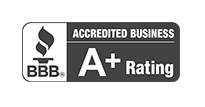Definition of a high risk merchant account
A high-risk merchant account refers to a type of payment processing account specifically designed for businesses that are considered to be at a higher risk of chargebacks and fraud. These businesses are classified as high-risk due to various factors such as operating in industries with a high potential for legal, financial, or reputational risks. High-risk merchants may include businesses involved in gaming, adult entertainment, pharmaceuticals, travel, and subscription-based services, among others. As a result of being labeled as high-risk, these merchants often experience difficulty in obtaining traditional merchant accounts. Instead, they must seek out specialized high-risk merchant account providers that are willing to take on the extra risk and offer tailored payment processing solutions to meet their specific needs. These accounts often come with higher fees, stricter underwriting requirements, and additional security measures to mitigate the potential risks associated with these businesses.
Importance of having a high-risk merchant account
Having a high-risk merchant account is crucial for businesses categorized as high-risk due to various factors such as industry regulations, credit scores, international sales, and inclusion in the MATCH/TMF list. These accounts offer specialized payment processing to handle the higher risk of chargebacks and fraudulent payments commonly associated with high-risk businesses.
Industry regulations often require high-risk merchants to have a specialized payment processing system in place to ensure compliance with legal and financial requirements. Additionally, businesses with lower credit scores may only qualify for a high-risk merchant account, as traditional merchant accounts may not be accessible to them.
International sales also pose a higher risk of fraudulent activity, and a high-risk merchant account can provide the necessary safeguards to protect against fraudulent payments.
Moreover, being included in the MATCH/TMF list, which identifies merchants with high chargeback ratios or fraud concerns, often necessitates the use of a high-risk merchant account. By having a high-risk merchant account in place, businesses can effectively mitigate the associated risks and ensure smoother payment processing, ultimately allowing them to continue operating despite their high-risk classification.
Understanding High-Risk Merchants
High-risk merchants are businesses that are more prone to experiencing chargebacks, fraud, and other financial risks compared to traditional businesses. Understanding the factors that make a business high-risk is crucial for payment processors, banks, and financial institutions when assessing the potential risks of working with these merchants. From industries with higher chargeback rates to businesses with poor credit history or high-volume sales, there are numerous reasons why a business may be considered high-risk. It’s important for these merchants to understand the key factors that contribute to their high-risk status to better mitigate potential financial risks and secure merchant accounts and payment processing solutions. By understanding what makes a business high-risk, both merchants and financial entities can effectively manage and reduce the risks associated with high-risk transactions and operations.
Characteristics of high-risk merchants
High-risk merchants are businesses that are perceived to have a higher likelihood of facing financial risks such as chargebacks. This can be due to various factors such as the nature of the industry, the business model, or the financial history of the company. High-risk merchants may face potential risks such as higher fees, stricter terms, and the possibility of having their merchant accounts terminated.
Factors that can lead to a business being labelled as high risk include a history of high chargeback rates, operating in a controversial or regulated industry (such as adult entertainment, online gambling, or pharmaceuticals), or having a bad credit history. Being labelled as high risk can impact a business’s ability to obtain a merchant account, as many traditional payment processors may be hesitant to take on the associated risks.
Common types of businesses and industries labelled as high risk include e-commerce, travel agencies, subscription-based services, and nutraceuticals. To improve their chances of being accepted for a high-risk merchant account, businesses can work on lowering their chargeback rates, improving their credit history, and seeking out specialized high-risk merchant account providers who are more willing to work with them.
Examples of high-risk industries and business types
High-risk industries and business types include adult products and services, online gambling, e-commerce, firearms, and subscription services.
Merchant category codes for high-risk industries can include 5816 for digital goods, 7841 for video game arcades, 7995 for betting/gambling, 5967 for direct marketing – inbound teleservices, and 4722 for travel agencies and tour operators.
Adult products and services include businesses selling adult toys, videos, and other adult entertainment products online or in physical stores. Online gambling refers to businesses offering online betting, casino games, and other forms of online gambling. E-commerce businesses that sell high-ticket items, have a high rate of chargebacks, or operate in high-risk countries are also considered high-risk. Firearms businesses that sell guns, ammunition, and other firearm-related products are typically classified as high-risk due to regulatory and legal considerations. Subscription services that involve recurring billing and have a high rate of customer disputes can also be classified as high-risk.
Overall, high-risk industries and business types are characterized by a higher likelihood of financial and legal risks for payment processors and may face challenges in obtaining traditional banking services.
Benefits of Having a High-Risk Merchant Account
A high-risk merchant account is essential for businesses that operate in industries with a higher potential for chargebacks or fraud. In this guide, we will discuss the various benefits of having a high-risk merchant account and how it can help businesses in these industries to safely process transactions and minimize risk. From reduced processing fees to increased customer trust and global payment processing capabilities, having a high-risk merchant account offers numerous advantages for businesses in high-risk industries. This guide will outline the key benefits and why obtaining a high-risk merchant account is a strategic decision for these businesses.
Access to credit card processing services
Accessing credit card processing services involves setting up a merchant account and integrating an online payment gateway. Merchant accounts are available in different types depending on the specific requirements of the business, such as retail, e-commerce, or mail/telephone order transactions. Each type requires different documentation and approval processes, and may have specific hardware or software requirements.
To start accepting credit card payments, the key steps are to choose a credit card processor, complete the application process for a merchant account, and integrate the online payment gateway into the business’s website or point-of-sale system. For in-person transactions, hardware such as card readers or POS systems may be required, while for online transactions, the website must be able to securely transmit payment information to the payment gateway.
Overall, accessing credit card processing services involves understanding the types of merchant accounts available and the specific requirements for each type of transaction, as well as following the necessary steps to start accepting credit card payments for both in-person and online transactions.
Increased revenue opportunities for high-risk businesses
High-risk businesses face challenges when it comes to obtaining traditional banking services, but there are increased revenue opportunities available to them. One option is to utilize high-risk merchant accounts, which cater specifically to businesses that are deemed high-risk due to factors such as high chargeback rates or industry regulations. These accounts allow businesses to process credit card payments and maximize their sales potential.
Additionally, alternative payment methods such as e-wallets, ACH payments, and cryptocurrency can provide high-risk businesses with more flexibility in accepting payments from customers who may not have access to traditional credit cards. This can open up new markets and increase overall revenue.
Furthermore, chargeback management solutions are crucial for high-risk businesses to minimize the impact of chargebacks on their revenue. By effectively managing and preventing chargebacks, businesses can protect their bottom line and maintain a healthy cash flow.
Overall, these revenue opportunities can help high-risk businesses overcome the challenges of obtaining traditional banking services and ultimately maximize their sales potential in their respective industries.
Key Considerations for Business Owners
As a business owner, there are a multitude of important considerations to take into account in order to effectively manage and grow your enterprise. From financial management to strategic planning, understanding your market and ensuring legal compliance, there are several key areas that require your attention to ensure the success and sustainability of your business. In this article, we will delve into some of the crucial considerations that business owners need to address in order to effectively navigate the complexities of running a successful business. We will explore key areas such as financial planning, market analysis, legal compliance, and strategic decision-making, providing valuable insights and guidelines for business owners seeking to make informed and impactful decisions for their organizations. Whether you are a seasoned entrepreneur or just starting out, these considerations are essential for building a strong foundation and achieving long-term success in the world of business.
Evaluating the risk level of your business
When evaluating the risk level of your business, it is important to consider several factors. These include chargeback rates, which indicate customer dissatisfaction and potential financial losses; the types of products and services offered, as some industries are more prone to chargebacks and fraud; recurring payments, as these can increase the likelihood of chargebacks; credit score, which can indicate financial stability and potential risk; and monthly sales volumes or transaction value, which can impact the overall exposure to risk.
Additionally, industry regulations play a significant role in determining the risk level of a business. Compliance with regulations can mitigate risk, while failing to adhere to them can result in fines and legal consequences. Reputational risk, or the potential damage to a company’s image and brand, is also an important consideration, as negative publicity can impact customer trust and loyalty.
In conclusion, evaluating the risk level of your business requires careful consideration of chargeback rates, types of products and services, recurring payments, credit score, monthly sales volumes, industry regulations, and reputational risk. By analyzing these factors, businesses can better understand their exposure to risk and take proactive measures to mitigate potential issues.
Choosing the right payment processor for your high-risk business
When choosing a payment processor for your high-risk business, there are several key considerations to keep in mind. Pricing is a crucial factor, as high-risk merchants often face higher fees and rates. Contract terms should be carefully reviewed, as some processors may have strict or long-term contracts that can be detrimental to your business. Customer support is essential, as you’ll want a processor that can provide reliable assistance for any issues that may arise. Industry experience is also vital; look for a processor that has knowledge and expertise in handling high-risk businesses. Lastly, infrastructure support is important, as you’ll need a processor that can support your business’s needs and ensure secure transactions.
Some of the top high-risk payment processors include Merchant Ground, PayPal, and Stripe. Merchant Ground specializes in high-risk industries such as CBD, e-cigarettes, gaming, gambling, betting, forex, tech support, raffle, and adult entertainment, offering competitive pricing and personalized service. Stripe is known for its experience in high-risk industries like travel, e-commerce, and gaming, and provides flexible contract terms and excellent customer support. PayPal is a well-established processor with extensive industry experience and a range of infrastructure support, making it an ideal choice for high-risk businesses in various sectors. Each of these processors offers specific advantages tailored to different types of high-risk businesses.
Features of High-Risk Merchant Account Providers
When it comes to finding a merchant account provider for high-risk businesses, it’s important to consider the unique features that these providers offer. From specialized risk management to flexible payment processing options, high-risk merchant account providers bring a range of services tailored to the needs of businesses operating in industries with elevated levels of risk. By understanding the key features of high-risk merchant account providers, businesses can make informed decisions about which provider best meets their specific requirements and helps mitigate the challenges that come with being labelled as high-risk.
Instant approval process for high-risk accounts
The instant approval process for high-risk merchant accounts typically requires certain documentation such as a government-issued ID, proof of address, bank statements, and business registration documents. The time frame for approval can vary, but typically it can be as quick as 24 to 48 hours. The approval rate for high-risk accounts may also vary but is generally high if all the required documentation is provided and meets the criteria.
For highly regulated industries, the underwriting process may take longer due to the need for additional compliance checks and documentation. However, our team is dedicated to expediting the approval process as much as possible to ensure a timely outcome.
In conclusion, the instant approval process for high-risk accounts involves submitting the necessary documentation, with approval typically taking 24 to 48 hours. For highly regulated industries, the underwriting process may take longer, but our team works diligently to secure approval as quickly as possible.
Rolling reserve requirements and its impact on cash flow
Rolling reserve requirements are a mechanism used by payment processors to mitigate the risk of potential chargebacks and refunds. The reserve is determined based on the perceived risk of the business, with higher-risk merchants facing stricter requirements compared to low-risk merchants. Typically, a percentage of each transaction is held in the reserve for a specified period, accumulating to form a buffer against potential losses.
The impact of rolling reserve requirements on cash flow can be significant, particularly for high-risk merchants. The funds held in reserve are temporarily unavailable for use, affecting the merchant’s working capital and liquidity. This can restrict the ability to invest in business growth, manage expenses, or take advantage of opportunities that require immediate access to cash.
Negotiating rolling reserve terms can be challenging for high-risk merchants, as payment processors are inclined to mitigate their exposure to risk. However, by demonstrating improved business practices, financial stability, or implementing risk mitigation strategies, merchants may be able to negotiate more favorable reserve terms.
In conclusion, rolling reserve requirements can have a substantial impact on a merchant’s cash flow, especially for high-risk businesses. Understanding the basis for the reserve determination and exploring negotiation possibilities can help alleviate some of the adverse effects on cash flow.
Managing Chargebacks and Fraud Risks
Managing chargebacks and fraud risks is crucial for businesses, especially those in high-risk industries. Implementing backend fraud prevention and chargeback monitoring systems can help identify and prevent fraudulent transactions before they occur. Additionally, coaching employees on preventing transaction disputes and providing them with the knowledge and tools to spot potential fraud can significantly reduce chargeback rates.
Securing a high-risk gateway merchant account is also essential for businesses operating in high-risk industries. These accounts are specifically designed to handle the unique challenges and risks associated with these industries, providing added protection and support.







